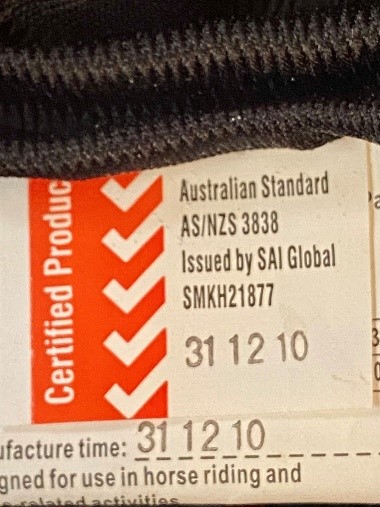How and When to Buy a Riding Helmet
We all know the importance of wearing a riding helmet (see our previous blog post: The Importance of Wearing a Helmet While Riding- Protection | Ranvet), but which helmet do I need? Buying a riding helmet can be daunting. There seems to be an endless variety to choose from, and the prices and safety standards vary even more widely. How do I know which one to buy?
Buying a Helmet Do’s and Don’ts
Always buy a helmet that follows the most up to date guidelines. The more safety standards a helmet meets the better it is. Every helmet should have a tag inside the brim that lists the safety standards it meets. These standards are designated with a code. The minimum requirement in Australia is currently: AS/NZS 3838:2006. The code is created by an independent organisation that creates committees that get together and set the standards for safety in Australia. The 3838 is the designation number and the 2006 is the year it was published. This means that any helmet that was certified before 2006 does not meet current minimum safety standards and is not considered safe. These standards are currently under review and may change in the near future. It is always a good idea to check what the current standards are before you purchase a new helmet. Approved safety standards can be found here: Current approved safety standards for helmets | Equestrian Australia.

Unfortunately, just meeting the safety standards is not enough. There are other factors that need to be considered when purchasing a helmet. Age, for example, is a major factor to consider in helmet safety. The helmet tag in the photo above has met the current safety standard, but because the helmet was manufactured in 2010 it is not considered to be safe anymore, because it is over 5 years old. Helmets should be replaced every 5 years. As helmets age, the materials used to manufacture them start to decay, become brittle and lose their strength. This will also happen more quickly if they are not kept clean and stored properly in a cool dry place away from sunlight. Even though you have a good helmet that meets all the safety standards, you may need to buy a new one.
Other Factors to Consider:
- Always check with your riding club/registered association to see which safety standards they require.
- Always check with your club to see which style of helmet is required for the events in which you plan to compete. For example, Cross Country helmets (Skull Caps) may not be permitted to have a visor.
- Measure your head with a tape measure for the best fit. A helmet should fit snuggly, but not be too tight or uncomfortable.
- When trying on helmets make sure your hair is styled the same way it is when you ride.
- Try different brands and shapes to see which helmet fits the most comfortably. Some helmet designs even offer “round fits” or adjustable size bands, to suit various head shapes.
- Make sure chin straps are easily adjustable and comfortable.
- Always replace a helmet if it has been involved in an accident.
- Never buy a helmet second-hand. Even if a second-hand helmet still meets the safety standards, you can never know for sure if it has been stored properly or has suffered any damage.
- Always check the manufacturing date of a helmet to make sure you are getting the best value for money.
- Always use a riding helmet designed for the discipline you are performing.
- Bike helmets are not appropriate for horse riding.
- Buy your helmet from a reputable source that will help you find the best fit for you.
- Just because it is the most expensive, doesn’t mean it is the safest for you! What makes it safe is the way that it fits and protects you!
- If buying helmets for another person, consider options to have a helmet fitting prior or after purchase, to ensure it is the correct fit.
Experts in Equine Nutrition
Every product in the Ranvet range has been developed to meet a horse’s most specific need at any given time, be it in a training environment or on a breeding farm. Having pioneered the formulation of specific medications and dietary supplements for horses, the company is now recognised as a leader in the areas of equine health and nutrition.
